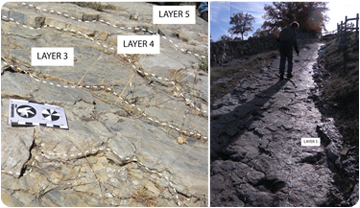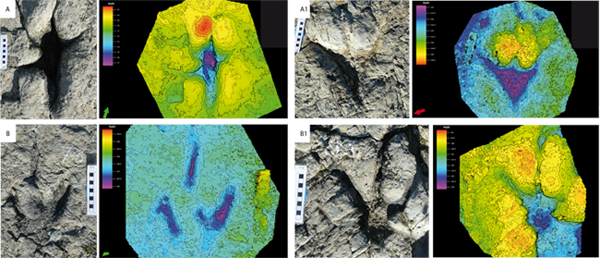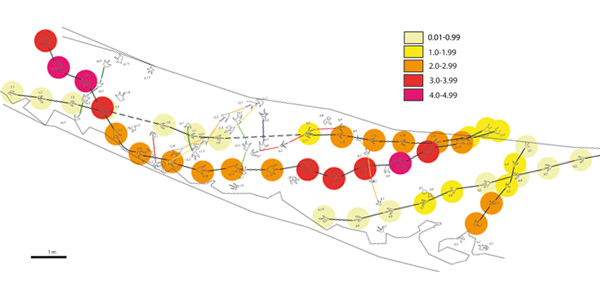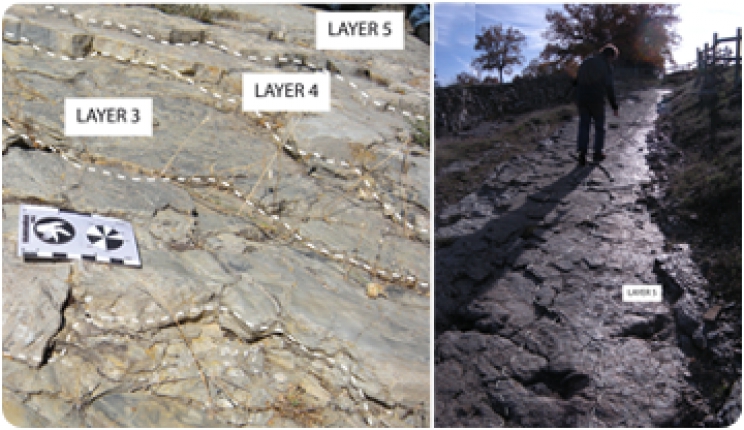
Ichnites at the El Frontal site (Soria) Laser scanning and photogrammetric techniques were used to analyze a series of dinosaur footprints from the site of El Frontal (in Soria, Spain). The study revealed that some traces do not show the actual morphology of the feet of these animals because its shape is strongly influenced by external factors, such as the water content of the sediment. The findings are published today in the journal PLOS ONE in an article led by Novella Razzolini, researcher at the Institut Català de Paleontologia Miquel Crusafont (ICP), in collaboration with Grupo Aragosaurus (IUCA), the University of Manchester and the company Paleoymás. The shape of the dinosaur tracks (also called ichnites) is determined not only by the morphology of the animal’s feet, but also by the characteristics of the substrate and the way in which sediments behaved before, during, and after the track was formed. This explains why two footprints belonging to the same trail (thus, made by the same animal) can show so many differences. These differences often hinder the classification of these footprints by researchers. In the article published today in the journal PLOS ONE, researchers studied the effect of the substrate characteristics in the formation of traces using laser scanning (LiDAR) and photogrammetric techniques in the site of El Frontal (Soria, Spain), which holds over 45 tracks and 200 footprints produced by theropod dinosaurs during the Early Cretaceous (in the Berriasian, between 145 and 140 million years ago). These techniques produce high-resolution models in 3D of the footprints, on which very accurate measurements of its depth can be performed. 
Distinct intra-trackway morphotypes (A/A1 i B/B1) The study was led by the ICP researcher Novella Razzolini and conducted in collaboration with researchers from Grupo Aragosaurus (University of Zaragoza), the Royal Veterinary College of London, the University of Manchester and the company Paleoymás, and allowed to quantify in detail the foot penetration in the sediment, as well as to estimate the amount of water in the substrate at the formation of the trace. Sedimentological analyses revealed that the site was a non-homogenous substrate that experienced lateral changes due to fluctuating and intermittent flow episodes in a fluvial-deltaic environment. 
The depth of footprints (in cm.) can be related to the water content of the substrate during its formation The study of fossil footprints provides a lot of information on certain aspects of the biomechanics of dinosaurs, such as the gait they performed or its body proportions. Unlike fossil bones, which can be transported and deposited into more recent rocks, footprints are considered as an evidence of life, that is, only living animals can perform them during the formation of the rock.
+ info: Razzolini, NL., Vila, B., Castanera, D., Falkingham, PL., Barco, J. L., Canudo, J.I., Manning, PL. & Galobart, À. (2014). Intra-trackway morphological variations due to substrate consistency: the El Frontal dinosaur tracksite (Lower Cretaceous, Spain). PLOS ONE. DOI: http://dx.plos.org/10.1371/journal.pone.0093708 |










